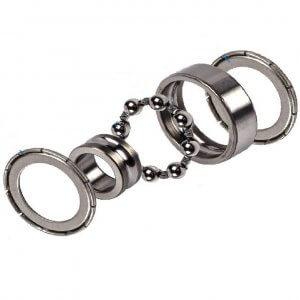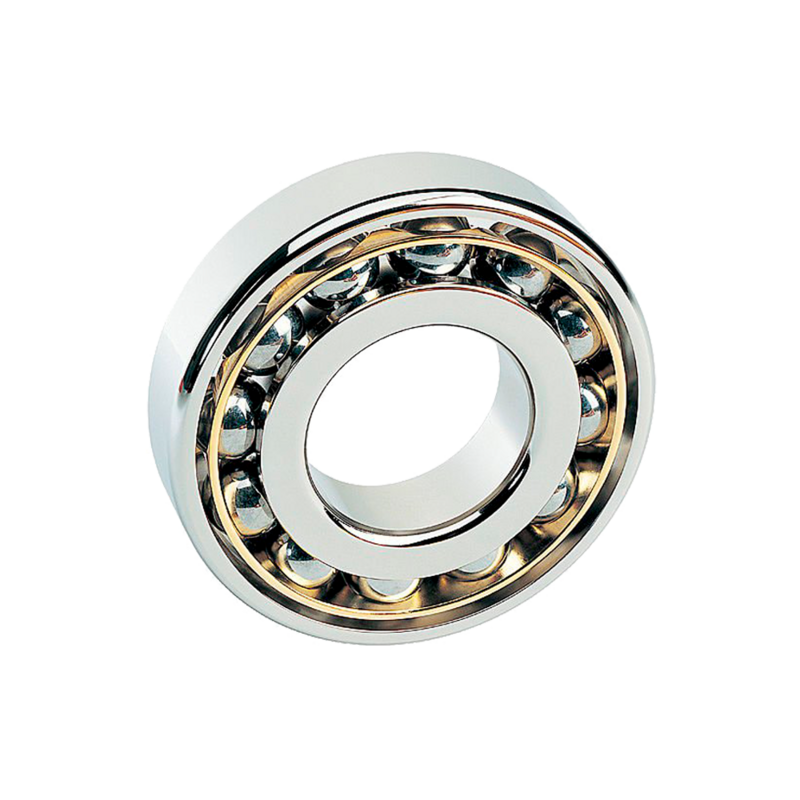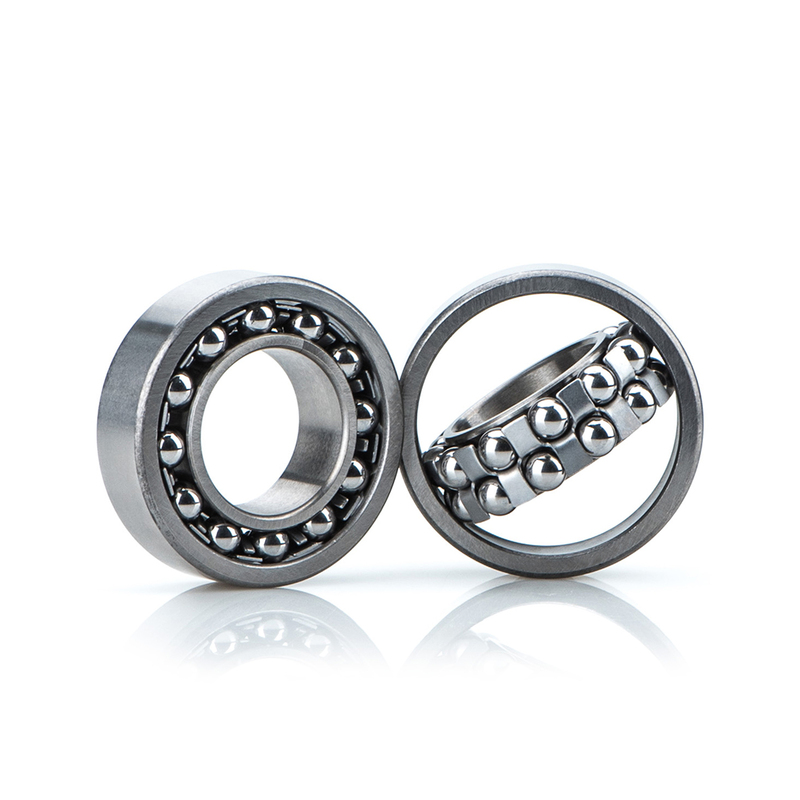Need Support?
Please provide your question. We’ll find you with the best support options.
Need Bearings? Contact us for reliable B2B solutions!
1. What Are the Functions of Each Part of the Ball Bearing?
2. How Do Ball Bearings Work and Their Application
4. How to Maintain the Ball Bearing?
An Overview
How do ball bearings work? Bearings are usually small and not very conspicuous in a product, but many products will not work properly without them – such as bikes, café machines, reels, engines, and more.
Ball bearings work by placing balls between the inner ring and outer ring so that the parts roll instead of slide. This rolling motion reduces friction and handling stress, making it easier for the shaft to move in a rotational or linear way and improving speed and efficiency.
In this article, we will first introduce the main parts of a ball bearing, then explain how ball bearings work and where they are used, followed by common ball bearing types and simple maintenance tips.

 Further Reading: Unveiling the Mystery of Ball Bearings' Composition: Dive into the Details
Further Reading: Unveiling the Mystery of Ball Bearings' Composition: Dive into the Details
Generally, bearings are used to achieve rotational or linear motion and to reduce friction and handling stress. It is similar to a wheel: the bearing enables the device to roll, which reduces the friction between the bearing surface and its tumbling surface. When friction is reduced, it becomes much easier to move in a rotational or linear fashion, which also increases speed and efficiency.
The balls in ball bearings carry the weight of the load. The force of the load weight is the force that drives the bearing to rotate. The load is transmitted from the outer ring to the balls, and then from the balls to the inner ring.
Most of the time, one ring is stationary and the other is attached to the rotating part. As long as one ring rotates, the other follows and the balls roll smoothly between the raceways instead of sliding.
Ball bearings typically have two ways of loading: radial loads and thrust loads, depending on how they are used. Sometimes only one type of load is applied, and sometimes both act at the same time.
Radial loads, as in pulleys, simply put weight on the bearing from the side, causing the bearing to roll or rotate due to tension.
Thrust loads are significantly different and stress the bearing in another way. Imagine a bearing (think tire) flipped on its side (think tire swing) and subjected to full force at that angle (think three kids sitting on a tire swing) – this is called a thrust load.
If you notice, ball bearings are usually used in applications where the load is relatively small. Because the ball is a sphere, it only contacts a very small point with the inner ring and outer ring, which helps it work smoothly.
On the other hand, if the ball bearing is overloaded, the balls might be damaged and even ruin the bearing.
Skateboards
Fidget spinners
Yo-yos
These ball bearings are the most commonly used type. They feature deep grooves in both the inner and outer rings, allowing them to support both radial and axial loads.

These bearings are specifically designed to accommodate both radial and axial loads simultaneously. Their angled contact surfaces enable them to support higher axial loads in comparison to deep groove ball bearings.
Thrust bearings are engineered to bear axial loads. They comprise two relatively flat rings with raceways and a series of balls placed between them. These bearings are solely intended for axial load support and should not be exposed to radial loads.

These bearings are engineered to handle misalignment between the shaft and housing. They feature two rows of balls and possess self-aligning capabilities, which help minimize the impact of misalignment on the bearing's performance.
These are just a few examples. Many more specialized ball bearing designs exist for different application needs.
Request a quote now and get your customized solution ! 
 Further Reading: Optimizing Bearing Quality and Performance: Key Strategies for Bearing Tolerance Control and Prevention of Bearing Abnormal Noise.
Further Reading: Optimizing Bearing Quality and Performance: Key Strategies for Bearing Tolerance Control and Prevention of Bearing Abnormal Noise.
Discover more about the features and applications of various bearings.
Click here to explore more articles and find the perfect bearing for your project.
Needle Bearings (Roller Bearings) are a type of bearing that performs exceptionally well at high speeds. Their rollers are precisely guided by specially shaped, high-rigidity cages with minimal dimensional error. Despite their small cross-section, needle bearings...
How Do Ball Bearings Work? Bearings are often small and unassuming components in a product, yet they are crucial for its proper functioning. Without bearings, many products would fail to operate effectively. But do you know how ball bearings...
Please provide your question. We’ll find you with the best support options.